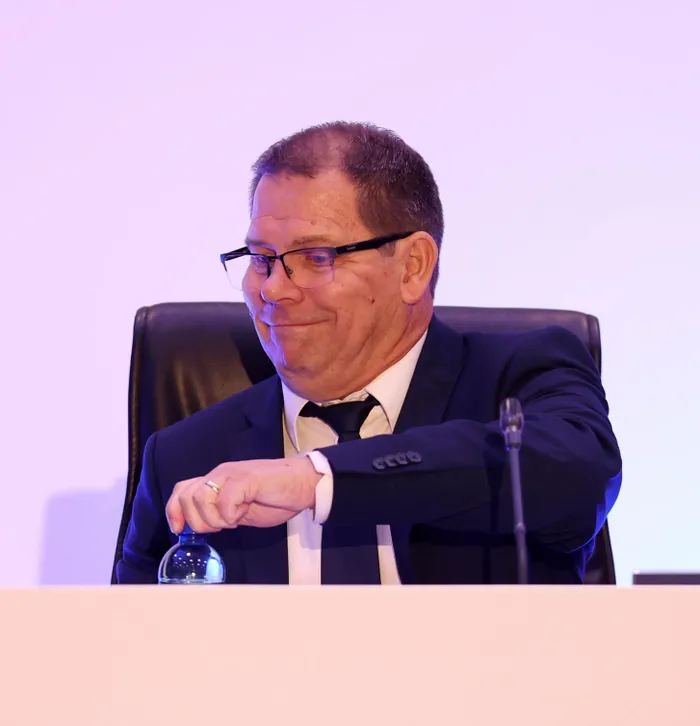Stellenbosch FC chief Rob Benadie: How SA can become a continental powerhouse again

Stellenbosch FC chief executive Rob Benadie says South African football can be a continental powerhouse if they sort out the off-field issues.
Image: Backpagepix
In the ever-turbulent world of South African football, few voices speak with as much calm, clarity, and measured insight as Rob Benadie, CEO of Stellenbosch FC.
As his club prepares for another competitive Betway Premiership season, Benadie’s reflections offer not only a window into the ambitions of a growing club but also a pointed commentary on the state of football in the country.
Speaking during an interview with the South African Football Journalists Association (Safja), Benadie was characteristically open, outlining both the footballing and operational blueprint of a club that has steadily emerged from the Cape Winelands to become a respected force in the PSL.
“We go into the season usually as one of the better-prepared clubs,” Benadie noted. “We try to do everything we can to ensure we’re ready — from pre-season training camps to scouting smartly.”
Indeed, the club’s approach to recruitment is methodical. While Stellenbosch FC lost key players such as Ismael Toure, Fawaaz Basadien and Sihle Nduli, Benadie is confident in their replacements — a Belgian centre-back, a left-back from Azerbaijan, and depth in midfield, including the arrival of midfield dynamo Khiba.
“We’re confident in our scouting process,” Benadie explained. “Our recruitment uses data, video analysis, and coach consultations. We don’t just sign names — we sign players who fit our style.”
This measured approach extends off the field as well, particularly in an era when financial mismanagement plagues many clubs. Unlike some of their bigger rivals, Stellenbosch FC is not a club throwing money at problems.
“We don’t pay exorbitant salaries,” Benadie said candidly. “But we do offer a conducive environment for players to grow, compete, and be seen by bigger clubs. Our players know they’re in the shop window.”
In fact, Stellenbosch’s model — modest salaries, focused development, and consistent exposure — has made it a destination of choice for ambitious talent. The club’s use of platforms like TransferRoom, which connects clubs globally for transfer dealings, is just one example of their forward-thinking approach.
“We’re not here to hoard talent,” Benadie stated. “If a player can go overseas or to a bigger local club, that’s a win for us too. We focus on long-term sustainability.”
Yet, even with their success, there remain frustrations — particularly with the lack of proper stadium access and infrastructure support in the Western Cape. For now, they’ll play their MTN8 fixtures at Cape Town Stadium due to poor pitch conditions at Danie Craven Stadium. It’s far from ideal, but Benadie sees a longer-term solution in the works.
With the backing of major shareholder Remgro, the club is in advanced negotiations with the Stellenbosch Municipality to take over the historic Van der Stel Sports Grounds — with the intention of building a purpose-fit stadium and high-performance training centre.
“We envision a facility with an 8,000 to 10,000-seater stadium — that’s more than enough for PSL matches,” said Benadie. “We want to create a home-ground advantage, like Wits did when they won the league. That kind of intimacy can be a weapon.”
The project, expected to cost tens of millions of rands, will also house development infrastructure, possibly making Stellenbosch a genuine academy powerhouse. While timelines stretch into 2026, the long-term thinking is clear — this is a club laying down roots for the future.
And what of that future? For Benadie, the dream is both local and continental. He openly admires Morocco’s recent rise in African football and points to their investment in elite youth academies as a key reason.
“When we visited RS Berkane, we saw the future of African football. Their academy had 400 kids living and breathing football,” he recalled. “We want to do the same — build the best academy in Africa, right here in Stellenbosch.”
But he’s also clear-eyed about the broader challenges in South African football — administrative bungling, governance failures, and missed opportunities.
“We’re scoring own goals,” Benadie lamented. “Whether it’s play-off debacles, club ownership changes, or court cases before the season even starts — we can’t keep doing this.”
Still, his optimism remains — buoyed by the performances of Bafana Bafana and Banyana Banyana, and the undeniable talent bubbling across the country.
“If we sort ourselves out off the field, we can be a continental powerhouse,” he declared. “But it’s going to take every club, every administrator, pulling in the same direction.”
That includes better coordination with local government. Stellenbosch FC, despite its success, feels undervalued in the province. Benadie diplomatically pointed out the need for more support — more finals hosted in the Western Cape, more grassroots investment, and better collaboration.
And while football in South Africa continues to lurch between crisis and triumph, Stellenbosch FC remains a shining example of what can be done with intention, planning, and patience. They don’t just want to win — they want to build.
As Benadie puts it: “If we one day make a profit, it won’t go into pockets — it’ll be reinvested. More coaches, better facilities, and stronger squads. We’re building something that will last long after we’re gone.”
In a country desperate for stability, direction, and progress in its football structures, that is precisely the kind of leadership needed.
Related Topics: